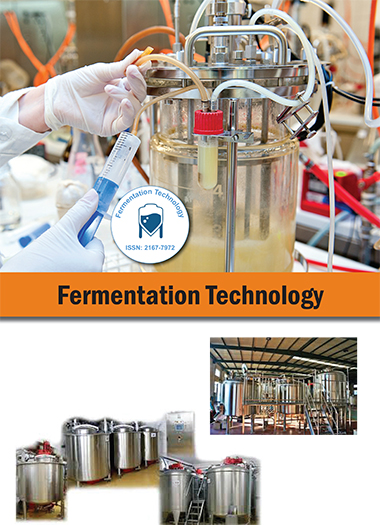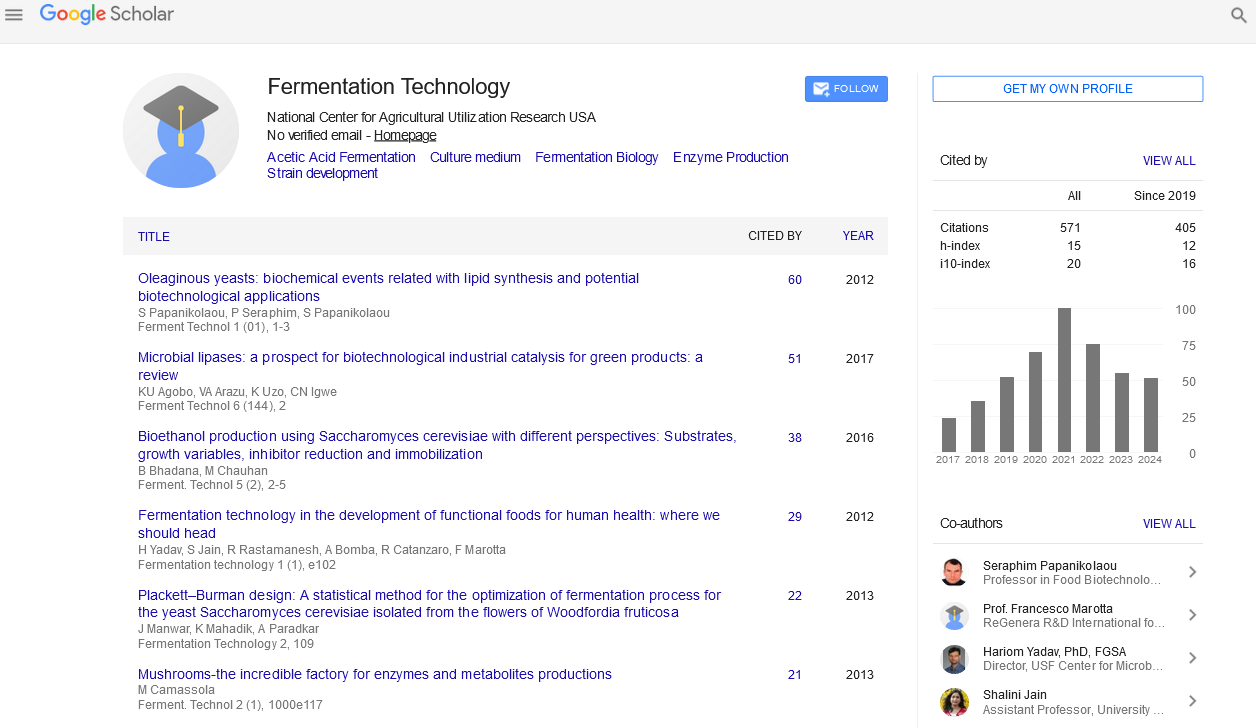Indexed In
- Open J Gate
- Genamics JournalSeek
- Access to Global Online Research in Agriculture (AGORA)
- RefSeek
- Hamdard University
- EBSCO A-Z
- OCLC- WorldCat
- Publons
Useful Links
Share This Page
Journal Flyer

Open Access Journals
- Agri and Aquaculture
- Biochemistry
- Bioinformatics & Systems Biology
- Business & Management
- Chemistry
- Clinical Sciences
- Engineering
- Food & Nutrition
- General Science
- Genetics & Molecular Biology
- Immunology & Microbiology
- Medical Sciences
- Neuroscience & Psychology
- Nursing & Health Care
- Pharmaceutical Sciences
Abstract
Fermentation of Cellulose with a Mixed Microbial Rumen Culture with and without Methanogenesis
Birgitte Kiaer Ahring, Nanditha Murali and Keerthi Srinivas
Ruminal fermentation has been well studied and includes cellulolytic microorganisms to hydrolyze cellulose tomonomers, acidogenic microbes including cellulolytic microorganism to convert the monomers to volatile fatty acids(VFA), hydrogen and carbon dioxide and methanogens to convert the acetic acid, hydrogen and carbon dioxide tomethane. Notably, methane production in ruminants causes energy loss for the animal and emitted methanecontributes significantly to greenhouse gases in the atmosphere. The present study focuses on selectively inhibitingof the methanogens using 2–bromoethanesulfonate (BES) and its effect on ruminal fermentation in an anaerobicrumen bioreactor model system. It was found that BES inhibited methane production (99.7%) and that addition ofBES decreased the total VFA productivity from 3 g/L/day to 1.3 g/L/day. Our study also found that addition of BESnot only inhibited the methanogens, but also had an impact on the non-methanogenic bacteria as well, resulting in adecrease in the acetic acid productivity from 1.8 g/L/day, in a reactor without BES to 0.8 g/L/day in reactor with BESadded. Endoglucanase assay revealed that addition of BES further inhibits cellulolytic microbes, resulting in adecrease in endoglucanase concentration in the reactor supplemented with BES. A notable increase in hydrogenpartial pressure was seen in the reactor with BES (from 1.7% to 29.8%).

